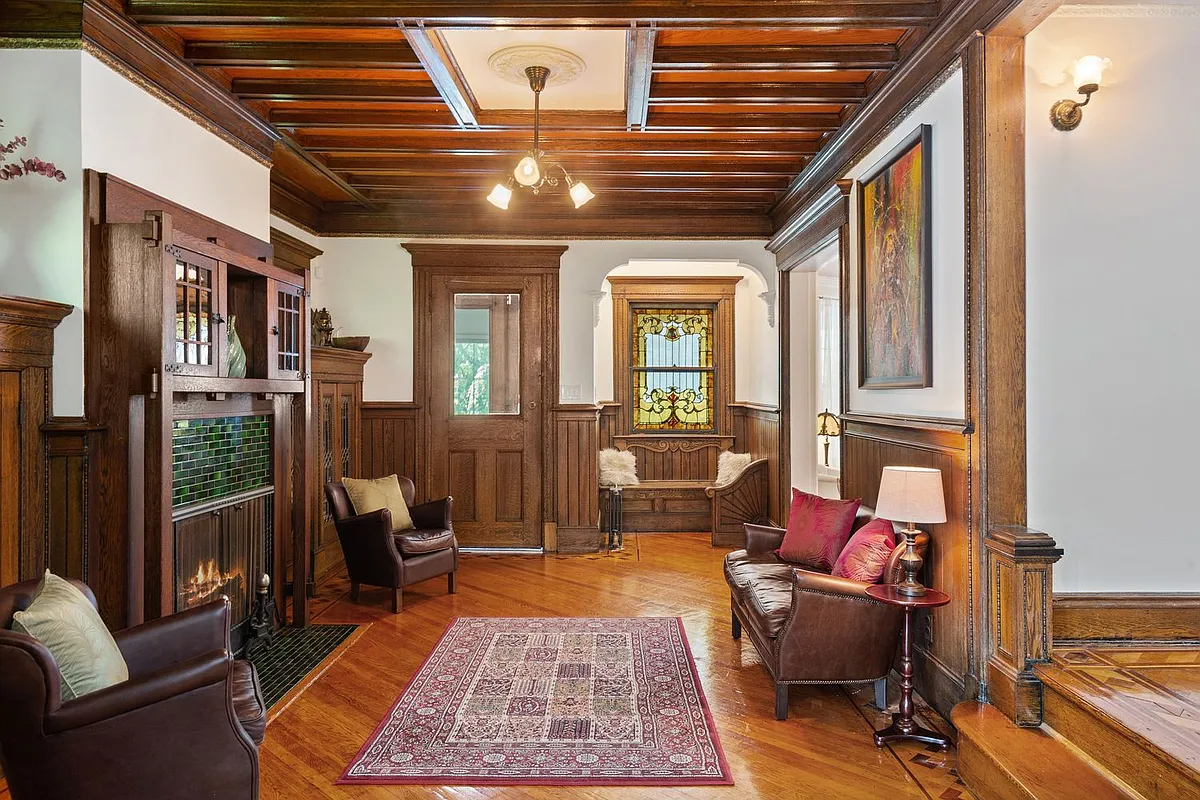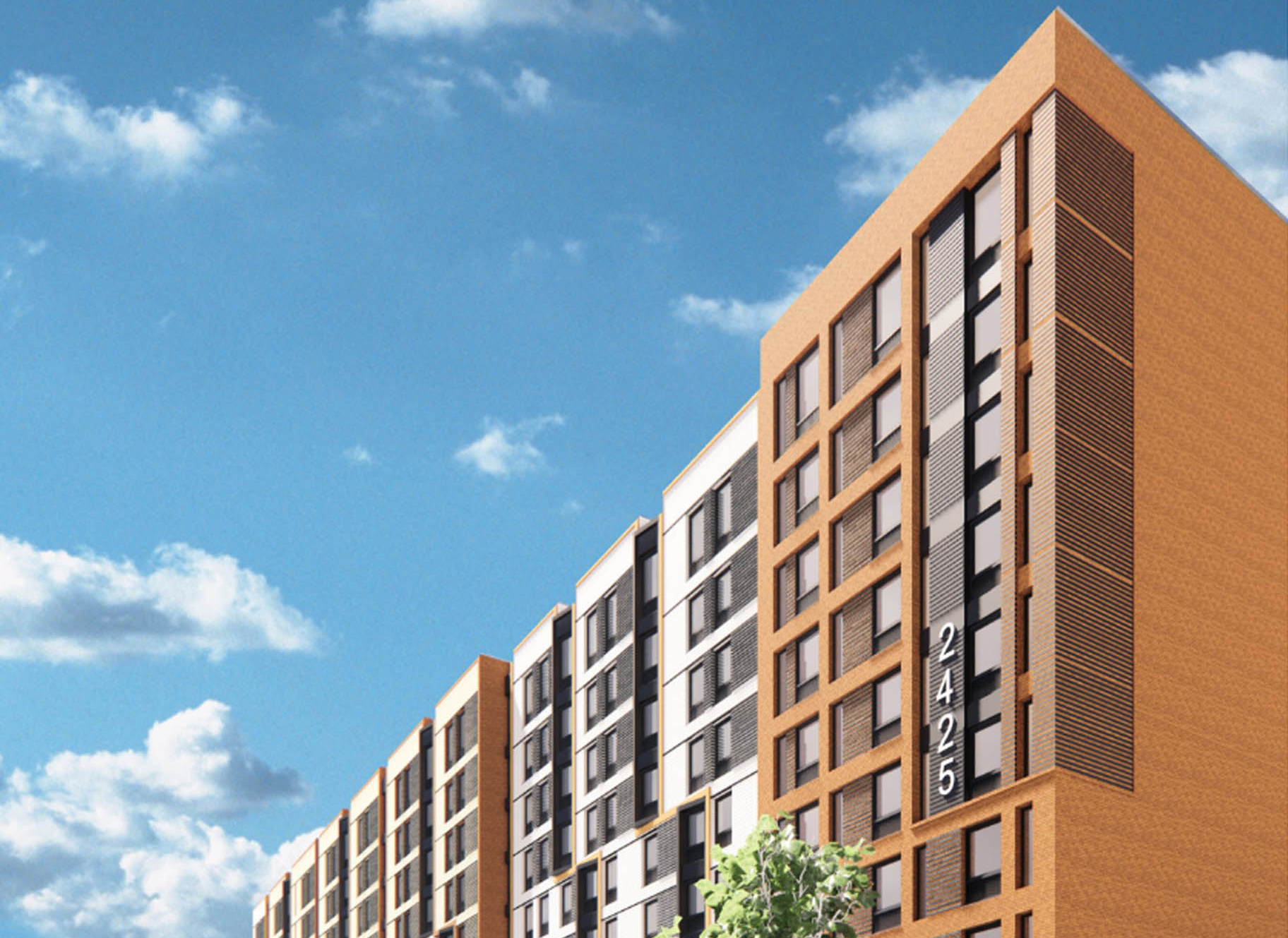House of the Day: 233 Garfield Place
We absolutely love this house at 233 Garfield Place that just hit the market. In fact, we’d rather buy a place like this that has all of its architectural details in place but is a little rough around the edges than a similar place that’s been too fancied up. Assuming the former was priced at…


We absolutely love this house at 233 Garfield Place that just hit the market. In fact, we’d rather buy a place like this that has all of its architectural details in place but is a little rough around the edges than a similar place that’s been too fancied up. Assuming the former was priced at a sufficient discount to the former, of course. And that’s the question here: This three-family place is beautiful but it’s been in the same family for 60 years and so may not appeal to people who need brand new kitchens and bathrooms. Given all that, is the asking price of $2,500,000 realistic?
233 Garfield Place [Heights Berkeley] GMAP P*Shark





i actually agree that this house is out of reach for the MFNs of the world. As distasteful as he is, the math does not work for most anyone paying with an 80% LTV mortgage, esp in this unclear economic environment.
however, what he fails to consider is that just about everyone buying a TH is trading up. the 10 yr mega real estate run up in NYC benefitted those who were in at the beginning, but unfortunately disadvantaged those that were not. even with the recent sell-off.
if you look at sales of TH most clear ACRIS with mortgages of 50% or less of the deed price.
another factor may be transfer of wealth (famous trust fundees).
“I never said there was a plethora…in fact I said it takes just one. ”
———————-
A buying party of one tends to have an awful lot of negotiation leveredge when bidding on a home (and a pool of better quality alternatives with similarly low bidder pools).
Points to a downtick in prices if you ask me.
Unless these people are this wealthy, but too dumb to know they are a rare breed indeed.
So it may only take one, but it’d have to be an incredibly stoopid one at that.
You’re right Bkplebe and Minard.
No one in NYC spends more than 2 million on a house anymore.
What was I thinking??
(meanwhile looks at last week’s biggest sales thread…)
Let me explain:
The NY post article talks about 43000 households not “people” so it will take a couple of households to buy the ridiculous (because of price not pink) brownstone.
I agree that even if you make $400,000 a year, this house, at two-plus million dollars plus repairs, is out of reach. This baby requires someone who got a windfall. either an inheritance or a huge bonus and who can plunk down two million cash. Those folks can be very picky.
Real estate has reached a high level of unaffordability in certain parts of Brooklyn. And keep in mind that this isn’t a pristine 2 million dollar house that you just move into. It is a mess that will require a year or two and tons of money to make presentable. Pretty incredible when you think about it.
“That’s quite an assumption that there are a plethora of couples where both people draw 200K+ a year.”
I never said there was a plethora…in fact I said it takes just one.
Buyers for these brownstones are, in fact a very small pool of people, but to suggest that rich people in NYC will no longer want to drop 2 million on a large home in a great neighborhood seems rather naive to me.
“They are mostly couples (with or without kids) and the article I just posted shows that there are 43,000 people in NYC who make over 200K a year.
400K a year (a couple) could afford this house. ”
A couple as in “a couple of households”? Amazing.
“400K a year (a couple) could afford this house. ”
That’s quite an assumption that there are a plethora of couples where both people draw 200K+ a year.
And as a family that if my wife were working instead of raising our daughter, would be a very nice annual family income, this 2.5 million dollar home makes little to no sense.
A 2 million dollar home is pushing it.
And you better bet I ain’t paying to massively reno the place, including mechanicals if I’m laying out that sort of scratch. There’s just no way.
2 million bucks, that sh*t better be in top-notch condition.
“43,000 people in NYC make over $200,000 grand a year. ”
———————–
I’m one of them (when my business is doing well). And you know what. Even at the $250-$300K a year my family might make, these places are seriously out of reach.
Plain and simple, $1M+ 1350SF condos and $2M brownstones do not make sense and are generally unsustainable if you consider a person such as myself “upper-middle class” for NYC? (God, upper class in NY you gotta pull in 400K+ a year I guess?)
And even at the $200-250K threshold, a monthly payment on an “average!” $1.6M 2-family home is a relatively risky proposition.
Consider (and I’m not trying to boast here, just make a point) I suspect most people like me in the magic $200K+ a year threshold, who are doing well by most standards:
–Aren’t sitting on $550K non-retirement in cash in a ready to go.
–They don’t carry zero debt service.
–They don’t have zero large monthly payments.
–They don;t have a contingency sale to make in order to purchase a new home (ie, renters)
Yet I have all these things and even a “modest, poor-man’s” $1.6 Million dollar 2-family home makes little to no financial sense. Nor do the 1+ Million dollar, 2BR condos I see.
The payments are just absurd and would add so much stress to your life it’s not worth it.
So I have no clue what someone might pay for this thing, but I’m going to venture that you’re looking at a very small pool of buyers, particularly ones w/ this sort of scratch and financial wherewithal looking to do a massive renovation and be landlords.
Either lots of people like me are going to cave in and take on large financial risk because we want to own in Brooklyn, or the multi-family brownstown market will forever become an uper class phenomenon that high-wage earners like myself who would like to be a landlord will never attain.
Or, more likely, the slow, gradual sapping of strength from the market, and the continued number of deals done below ask will continue until well-to-do working people can afford to live in the community.